Safe Production Expansion with Ammonia Glycol Chiller and Pumping Skid
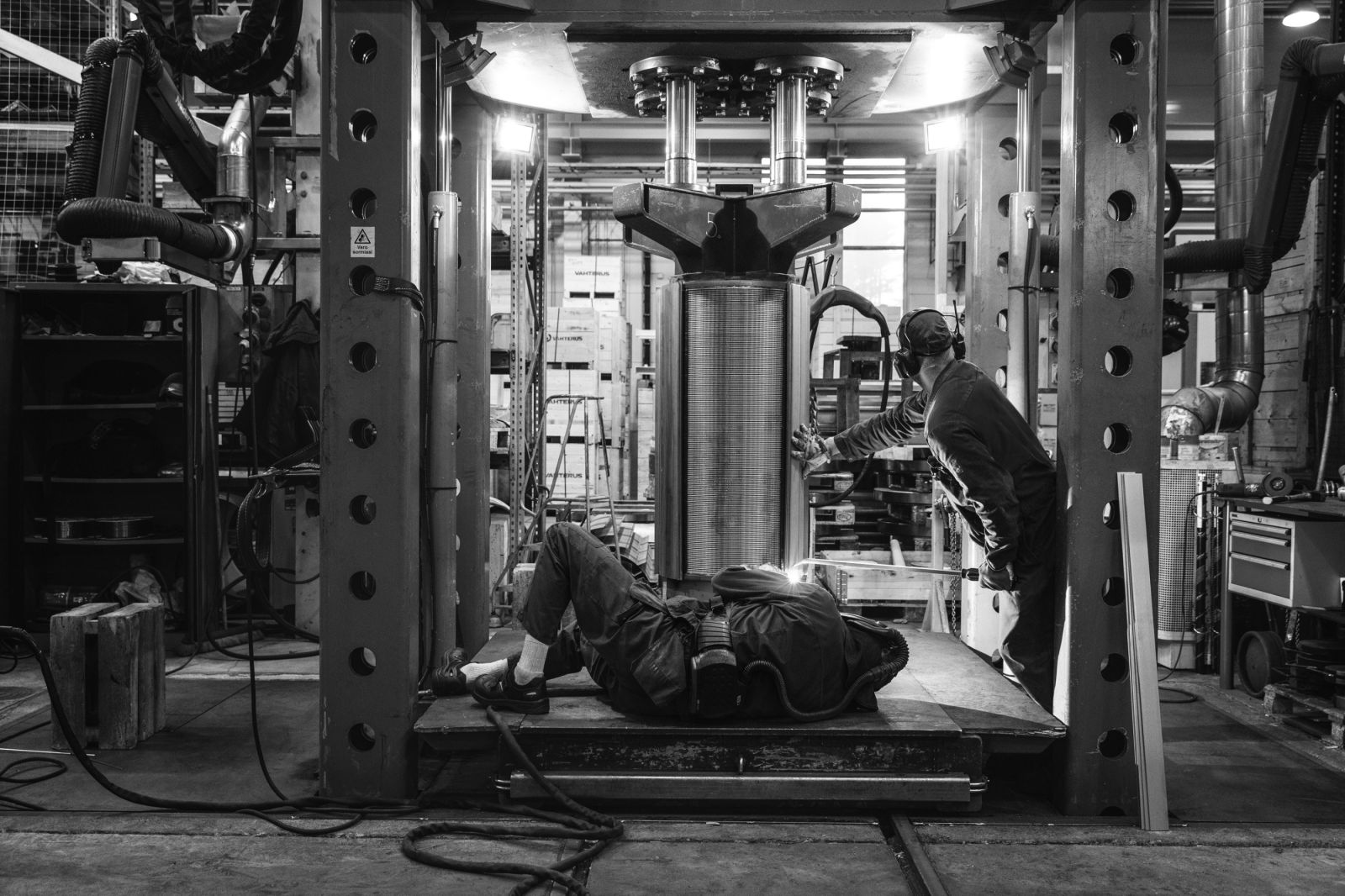
Mack Hajjar, Projects Engineer at Tri Tech Refrigeration Australia
Established in 1994, Tri Tech Refrigeration Australia is one of the leading industrial refrigeration service and contracting providers in Australia, with a particular focus on the natural refrigerants ammonia and CO2.
Zammit Ham & Bacon Curers is a family owned and operated company whose humble origins date back to 1954, when Francis Zammit, a butcher by trade, migrated from Malta to Australia and with the help of his sons, began producing Maltese sausages for the local community. In 1958, the Zammit family expanded its business and began producing hams – the products for which the company is now renowned. Zammit Ham & Bacon Curers handle the production of small goods through all its stages and create a unique product by utilising the latest technological efficiencies to control and monitor the curing, cooking and packaging of the products at their factory premises in Pendle Hill, Sydney.
The ammonia refrigeration plant at the Zammit’s Pendle Hill facility was designed, installed and commissioned by Tri Tech Refrigeration Australia in 2014. In 2018, two new production areas for small goods slicing, packaging and packing were built in a location far from the existing chilled glycol infrastructure. Therefore, a remote glycol chiller and pump skid was needed that could be connected to the existing high-ammonia, high-pressure liquid and dry-suction mains and also fitted to new localised glycol mains services in the two new production areas. Glycol, rather than ammonia is commonly used in production areas occupied by people for safety reasons.
The proposed glycol chiller and pump skid needed to use ammonia, the plant’s primary refrigerant, to cool a 30% propylene glycol solution, which in turn was used as a secondary refrigerant to provide refrigeration for two new production areas operating at between 8°C (46.4°F) and 12°C (53.6°F).
A 250kW (71 ton) heat exchanger was required that could cool incoming 30% Propylene Glycol at 1.5°C (34.7°F) to -3.5°C (25.7°F) using ammonia at a saturated evaporating temperature of -9°C (15.8°F).
After evaluation of various heat exchanger types and configurations, Tri Tech Refrigeration Australia opted for a Vahterus PSHE 5/4HH Combined Plate & Shell Heat Exchanger for the following reasons:
Compact size: relative to ‘conventional’ flooded plate heat exchangers, two of which were of similar capacity and installed elsewhere in the plant in 2014, the Vahterus unit selected allowed for a skid with a smaller footprint.
Cost reduction: the Vahterus unit selected allowed for an overall reduction in skid cost given that there was no need
for an external surge drum and interconnecting pipes and valve. Insulation was also simpler, allowing for a further cost
reduction.
Improved safety: the fully welded design reduced potential for leakage compared to semi-welded/gasketted or brazed plate heat exchanger units.
The skid configuration features:
- Level control: Danfoss SV4 pilot float and PMFL 80-3 main valve, allowing for faster commissioning time and fewer
PLC controls.
- High level protection: Hansen HLLe float with high-level cut-off on EVM NC pilot fitted in SI port of PMFL 80-3 and a
secondary ammonia suction trap downstream in the main plant (desirable but not essential).
- Pressure protection: dual Hansen relief valves set at 1800kPa (261 PSI) on the shell side and glycol circuit fitted with
600kPa (87PSI) pressure relief.
- Ammonia controls: suction line fitted with Danfoss ICS 80-3. SI & SII ports fitted with EVM and CVP, allowing on/
off control at -9°C SST (201kPa(g)) (15.8°F (29.15PSI)). P port fitted with CVP set to relieve at 0°C SST (328kPa(g)) [32°F (47.57PSI)). - Glycol controls: glycol set at full flow with minimum flow bypass without using pump VSD. Glycol temperatures controlled by opening and closing the suction EVM (and therefore opening/closing) main suction valves to achieve glycol leaving temperatures within a -3°C (26.6°F) / -4°C (24.8°F) dead band.
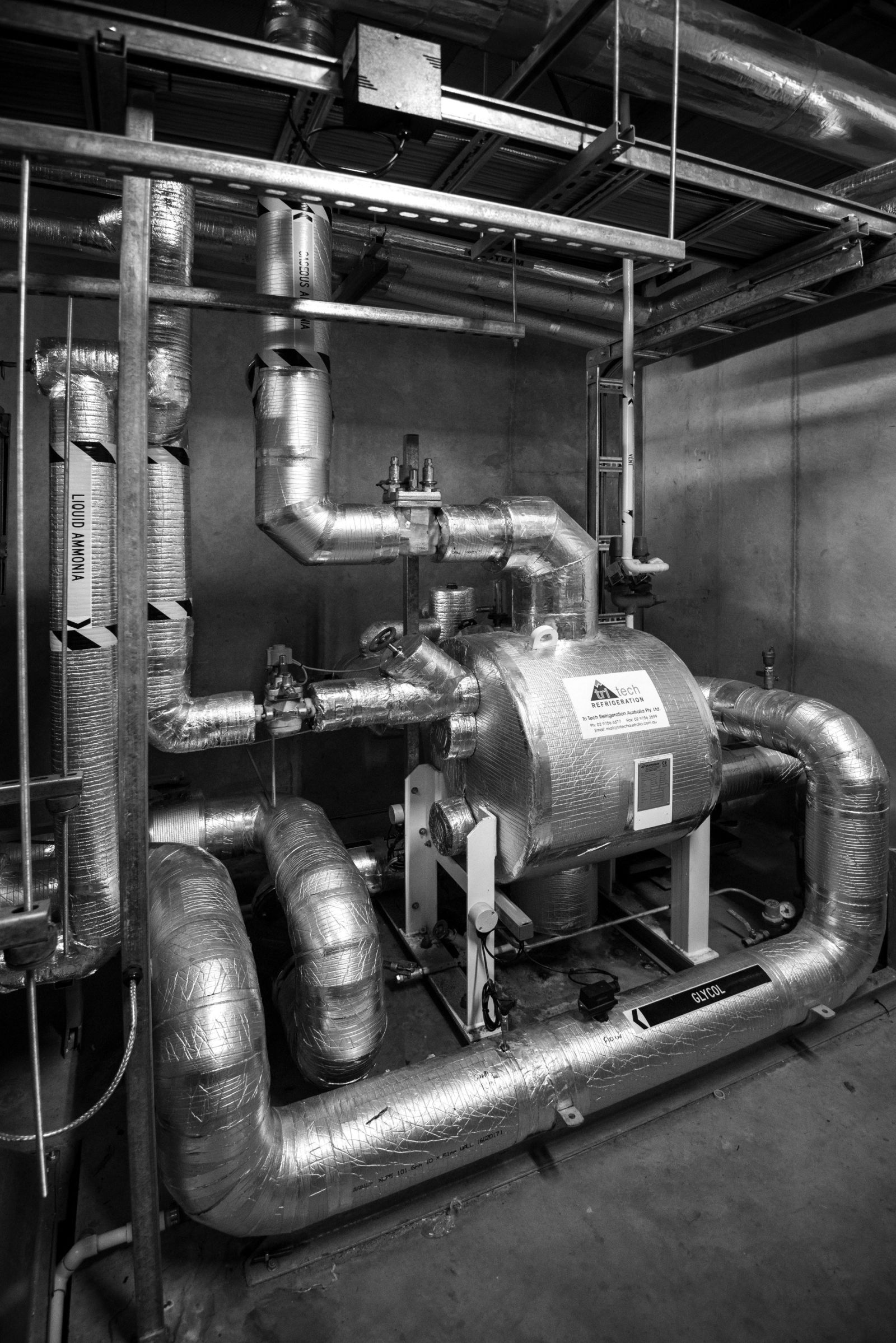
The unit was installed in December 2017 and commissioned in March 2018. There were no performance, temperature or pressure-drop related issues, and satisfactory level control and oil draining/oil drain sump volume.
Issues experienced during commissioning involved high ammonia levelling on start-up due to elevated glycol temperatures. This was remedied by programing a pump-out cycle on unit shut-down and pulsing the ammonia liquid feed on start-up. A bigger shell size for initial surge on start-up is an alternative but more expensive solution.
This unit was the first Vahterus PSHE Combined integral to an in-house Tri Tech Refrigeration Australia design to be purchased, installed and put into service. Since then, the cooperation between Tri Tech Refrigeration Australia and Vahterus has continued with the:
- commissioning of two US-built packages with onboard Vahterus glycol chillers in January 2018
- in-house design and installation of two other greenfield plants using three ammonia/CO2 cascade condensers commissioned in January 2019 and January 2020
- installation and commissioning of five NewTon packages built by Mayekawa with Vahterus Plate & Shell technology in
July 2019
- in-house design of another ammonia glycol chiller with an 800kW (227 Ton) capacity due to be built and installed in Q2
2020 and commissioned in Q3 2020
- selection of additional units for conceptual designs for potential future projects requiring Combined in ammonia/CO2 cascade, ammonia desuperheating, glycol chilling and ammonia sub-cooling/economising applications.
Download the case study as a PDF

Transform your project with Vahterus Expertise
Interested in working with us? Our team of experts are ready to collaborate with you. Contact us today to embark on a journey towards cost-effective, sustainable and energy-efficient heating solutions.
Discover more of our Customer Stories
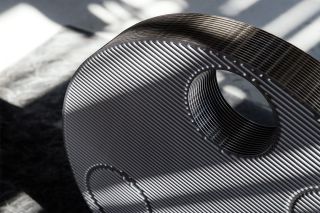
Improving Safety and Efficiency at Ice Rinks with Accent Refrigeration
Accent Refrigeration Systems of Victoria, British Columbia (BC), Canada, have been designing and manufacturing ammonia refrigeration systems for 30 years. The two...
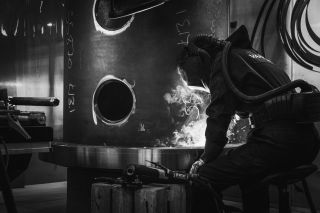
CO2 Cold Store Operates with Energy Efficiency and Sustainability in Eastern China
Yonghai Yi, Senior Sales Engineer at Vahterus China ...
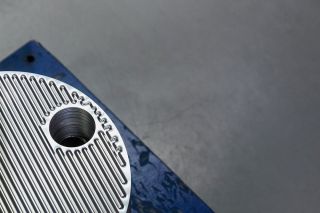
Vahterus Technology Transforms London's Underground Heat
The project to extract waste heat from an underground train network is the first of its kind in the world, and...
